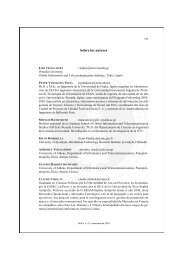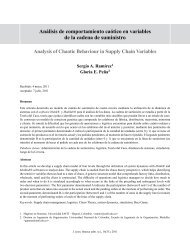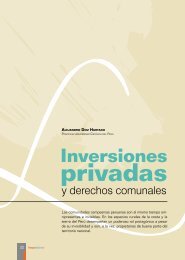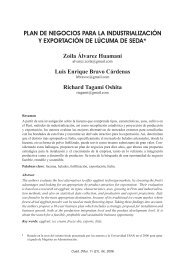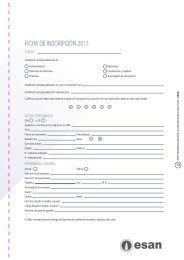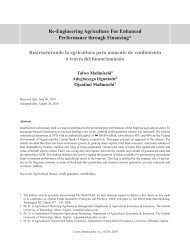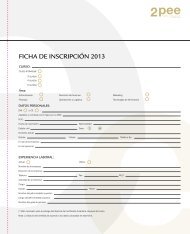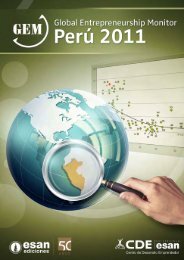El costo de capital en sectores regulados y mercados ... - Esan
El costo de capital en sectores regulados y mercados ... - Esan
El costo de capital en sectores regulados y mercados ... - Esan
You also want an ePaper? Increase the reach of your titles
YUMPU automatically turns print PDFs into web optimized ePapers that Google loves.
Abstract<br />
Since it was first proposed in 1964 the CAPM mo<strong>de</strong>l has become the most wi<strong>de</strong>spread<br />
and used in <strong>de</strong>termining the opportunity cost of <strong>capital</strong>. However, its usefulness in<br />
emerging countries has be<strong>en</strong> subject to heated <strong>de</strong>bate.<br />
One of the main criticisms aimed at the mo<strong>de</strong>l is that it can only be used in <strong>de</strong>veloped<br />
countries where <strong>capital</strong> markets operate effici<strong>en</strong>tly. In emerging nations like Peru,<br />
<strong>capital</strong> markets are insuffici<strong>en</strong>tly liquid, negotiation levels are incipi<strong>en</strong>t and<br />
transpar<strong>en</strong>cy <strong>de</strong>fici<strong>en</strong>t. In other words, the elem<strong>en</strong>ts are lacking to effici<strong>en</strong>tly create<br />
market prices.<br />
Nonetheless, the mo<strong>de</strong>l’s advantages and simplicity warrant its use. To counter<br />
argum<strong>en</strong>ts opposing the use of the CAPM mo<strong>de</strong>l in <strong>de</strong>termining the cost of <strong>capital</strong> in<br />
emerging countries, a country risk premium must be ad<strong>de</strong>d to the cost of <strong>capital</strong><br />
<strong>de</strong>termined using the traditional method.<br />
This docum<strong>en</strong>t pres<strong>en</strong>ts three methods for computing the cost of <strong>capital</strong> for regulated<br />
industries in emerging markets: i) the expected return using the sectorial beta; ii) the<br />
expected return using public betas for regulated companies; and iii) the expected return<br />
using primary data for regulated companies. This paper also pres<strong>en</strong>ts the concept of<br />
country risk and the controversies surrounding its <strong>de</strong>finition and estimation. In<br />
addition, it pres<strong>en</strong>ts the sources and procedures for <strong>de</strong>termining the risk-free rate and<br />
market return. Finally, the paper reviews the use and calculation of betas (as a<br />
measurem<strong>en</strong>t of risk) from a CAPM perspective.<br />
4



